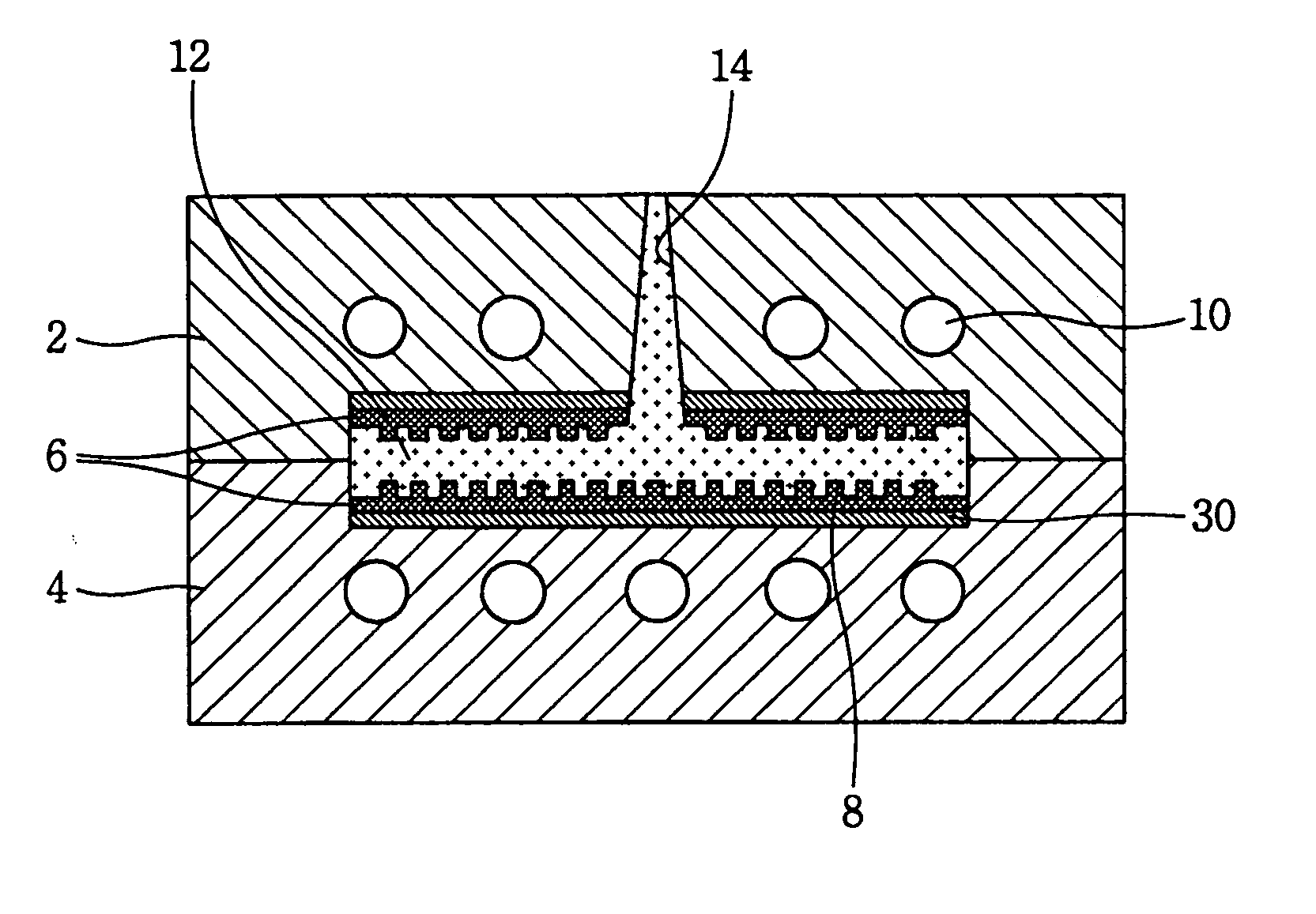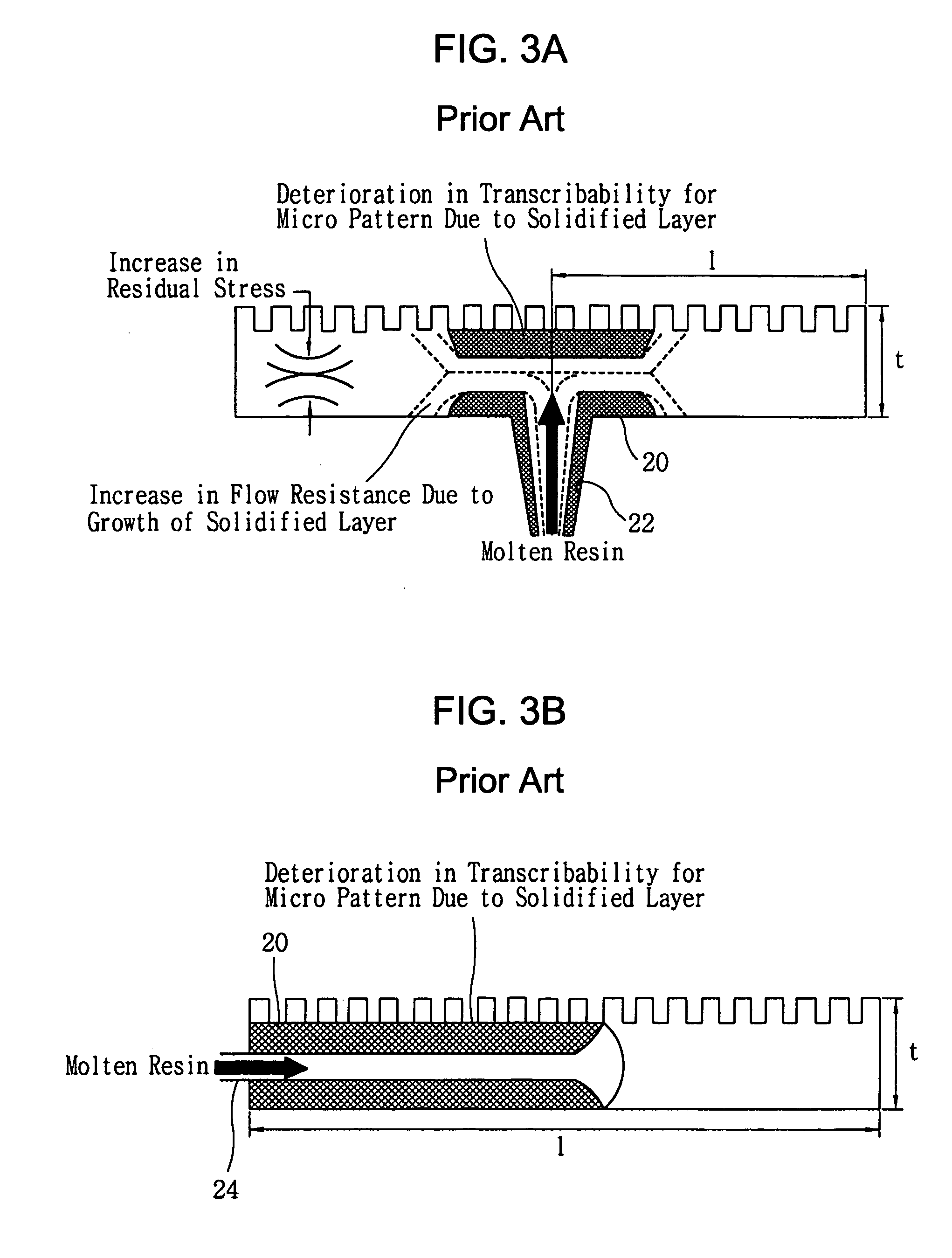Molding system for molding micro pattern structure having micro heating heating element and method for fabricating mold insert for molding micro pattern structure used therein
- Summary
- Abstract
- Description
- Claims
- Application Information
AI Technical Summary
Benefits of technology
Problems solved by technology
Method used
Image
Examples
Embodiment Construction
[0044] A molding system for molding a micro pattern structure having a micro heating element and a method for fabricating a mold insert for molding a micro pattern structure used therein in accordance with the present invention will now be described in detail with reference to the accompanying drawings.
[0045] The present invention is characterized in that it is possible to quickly heat and cool the mold insert 6 with a micro / nano pattern using a micro heater 32 formed in an integrated manner by using a MEMS (MicroElectroMechanical Systems) process, by which it is possible to improve transcribability for the micro / nano pattern and produce a high-performance micro-pattern structure with excellent properties.
[0046] In a molding system according to a preferred embodiment of the present invention, the micro heating element 30 with a MEMS structure which can control a temperature of the mold insert 6 by heating it is formed between the mold insert 6 and a mold. FIG. 5 is a side view of ...
PUM
| Property | Measurement | Unit |
|---|---|---|
| Temperature | aaaaa | aaaaa |
| Pressure | aaaaa | aaaaa |
| Electrical resistance | aaaaa | aaaaa |
Abstract
Description
Claims
Application Information
 Login to View More
Login to View More - R&D
- Intellectual Property
- Life Sciences
- Materials
- Tech Scout
- Unparalleled Data Quality
- Higher Quality Content
- 60% Fewer Hallucinations
Browse by: Latest US Patents, China's latest patents, Technical Efficacy Thesaurus, Application Domain, Technology Topic, Popular Technical Reports.
© 2025 PatSnap. All rights reserved.Legal|Privacy policy|Modern Slavery Act Transparency Statement|Sitemap|About US| Contact US: help@patsnap.com



